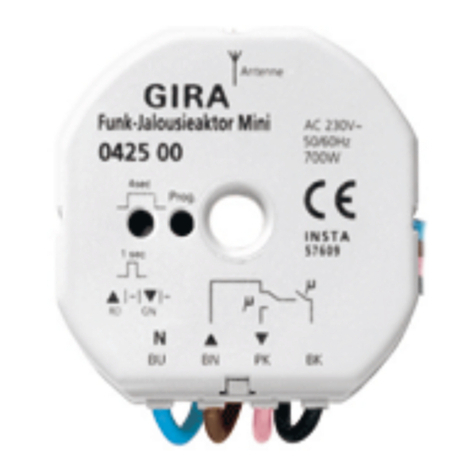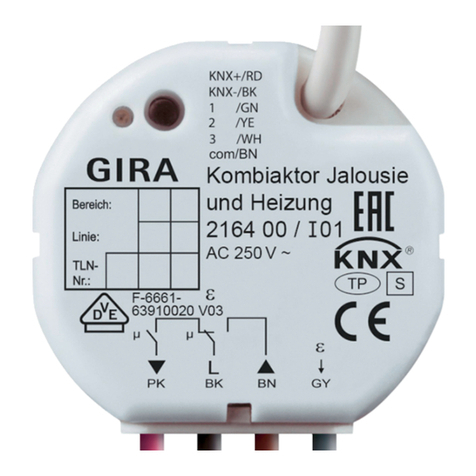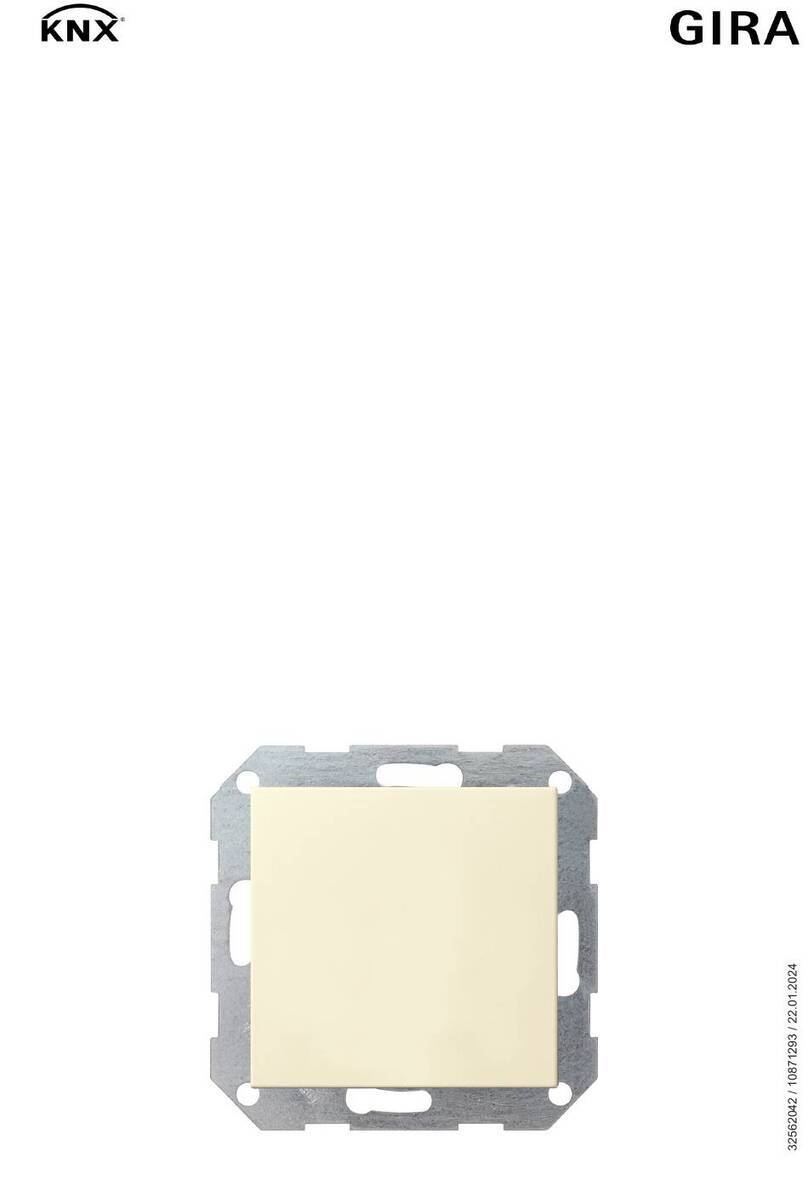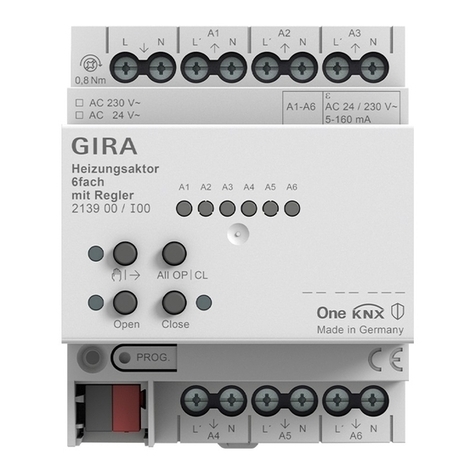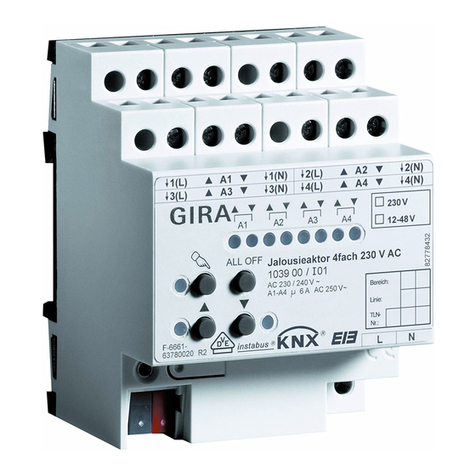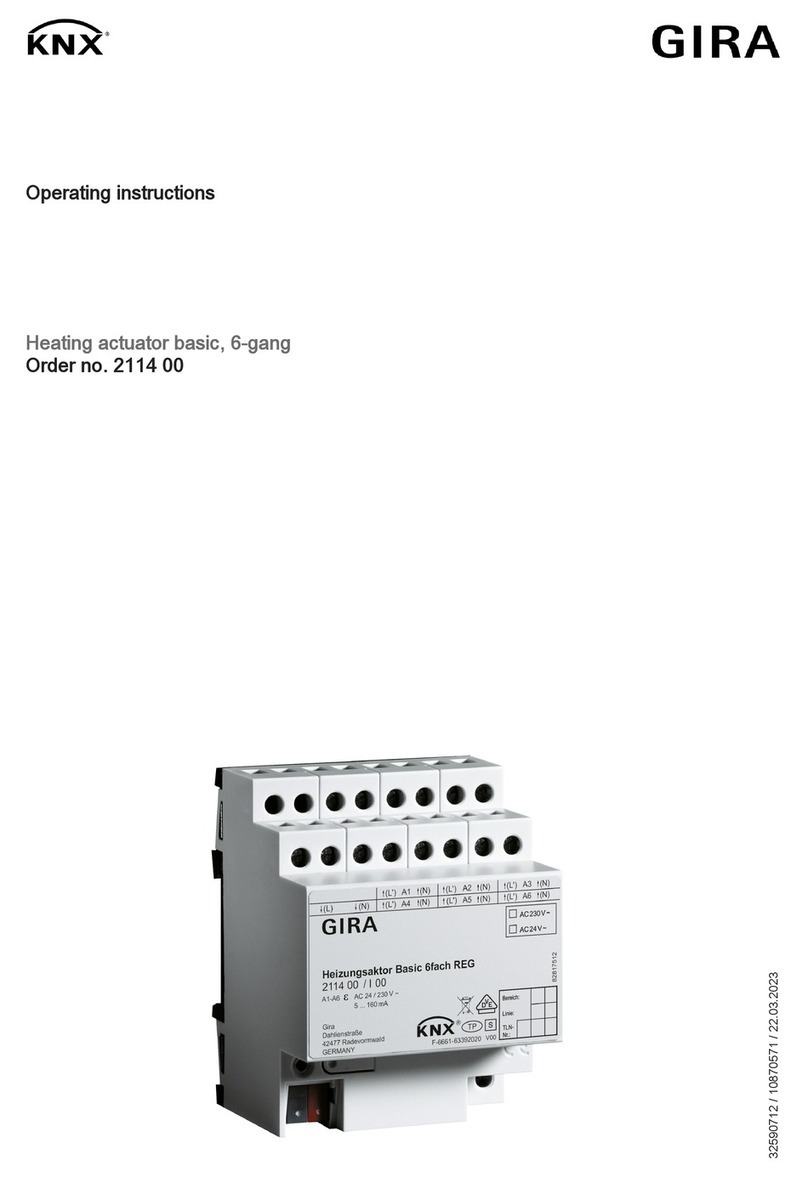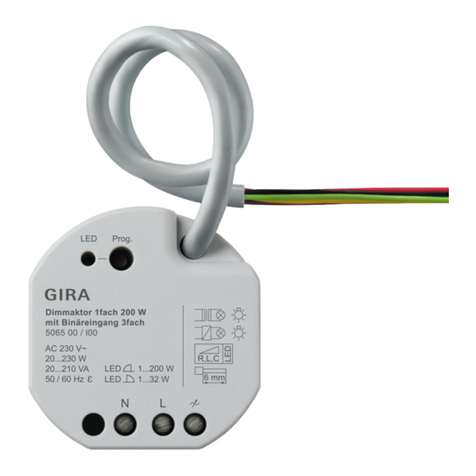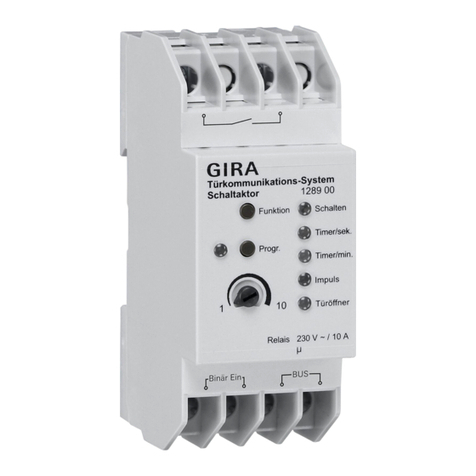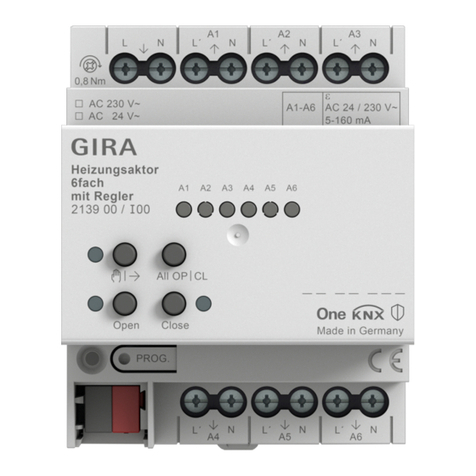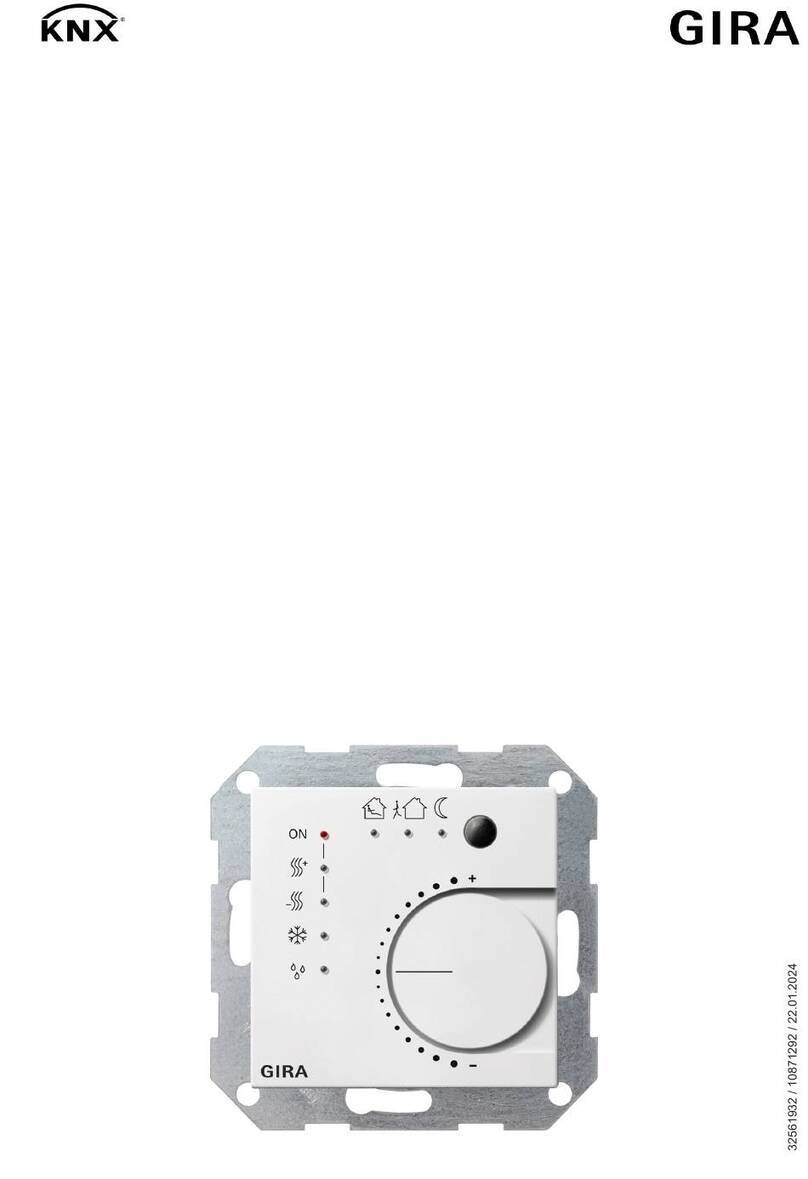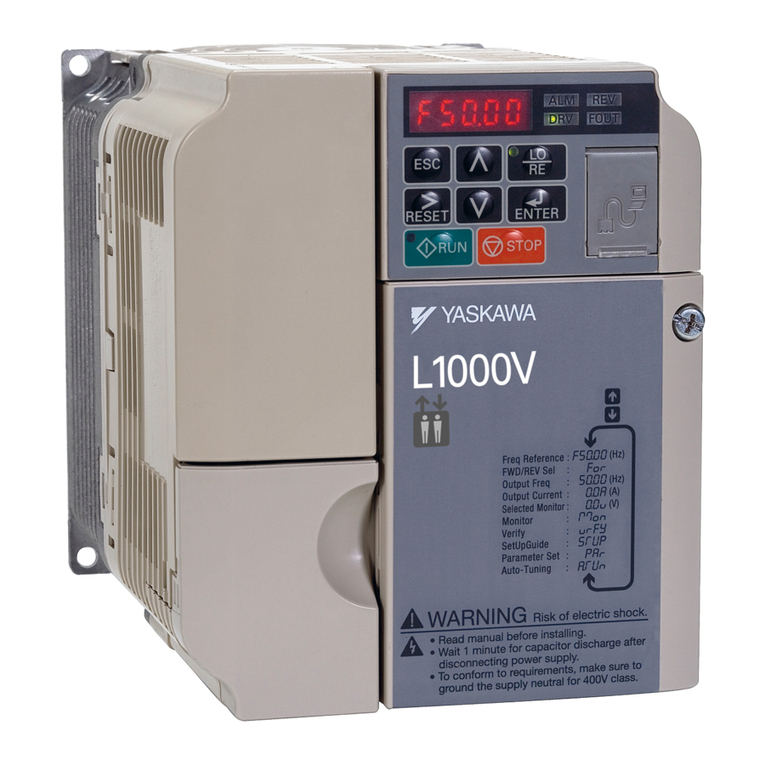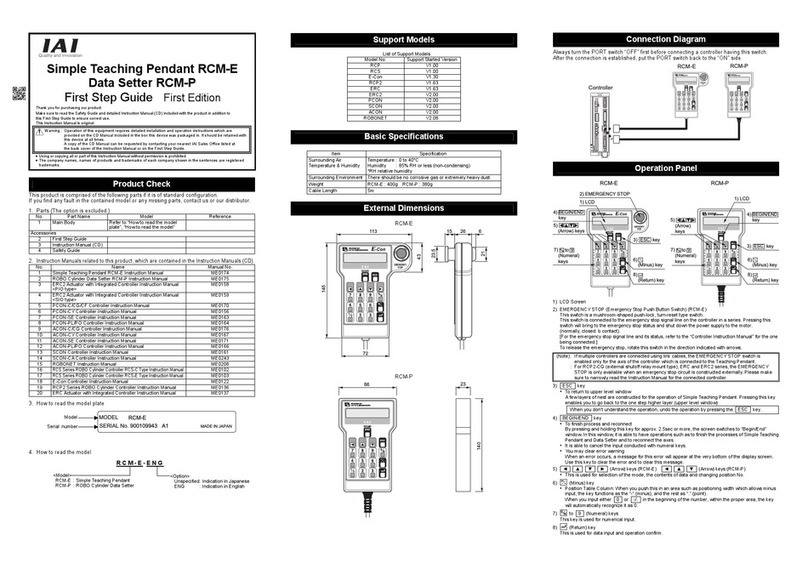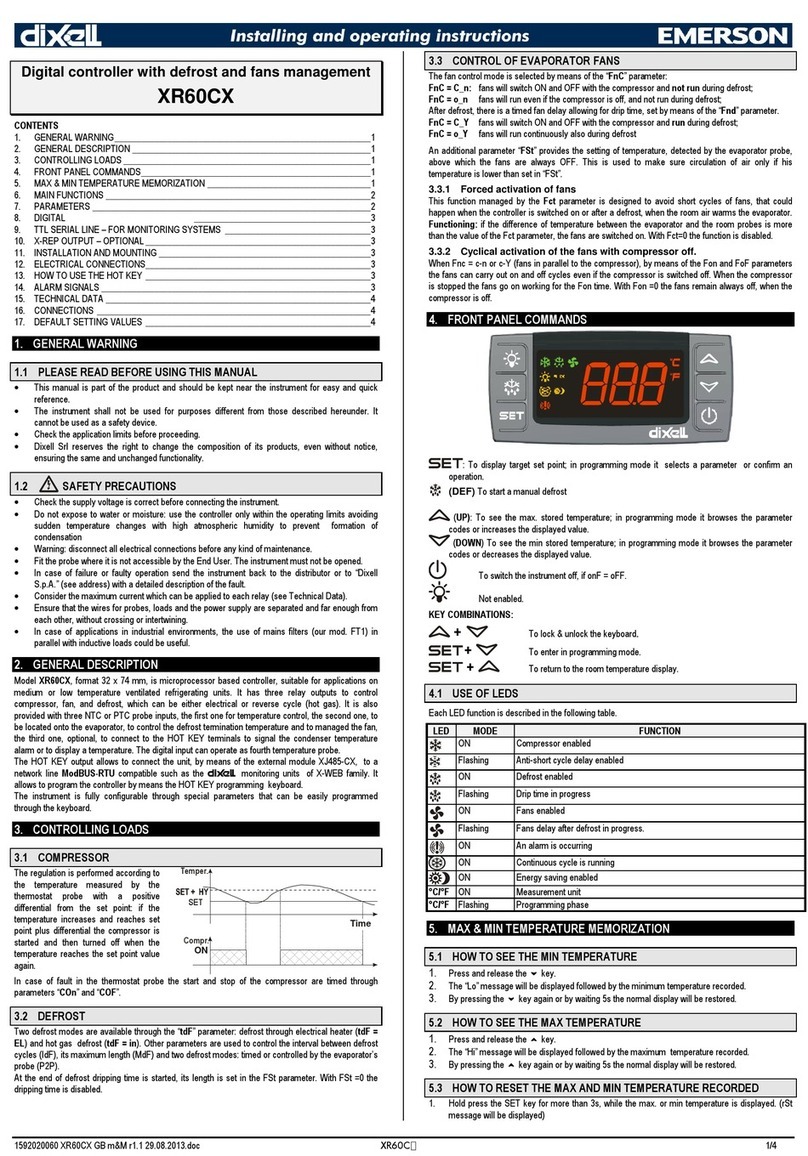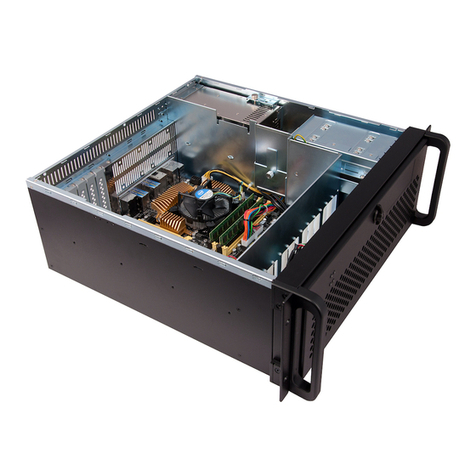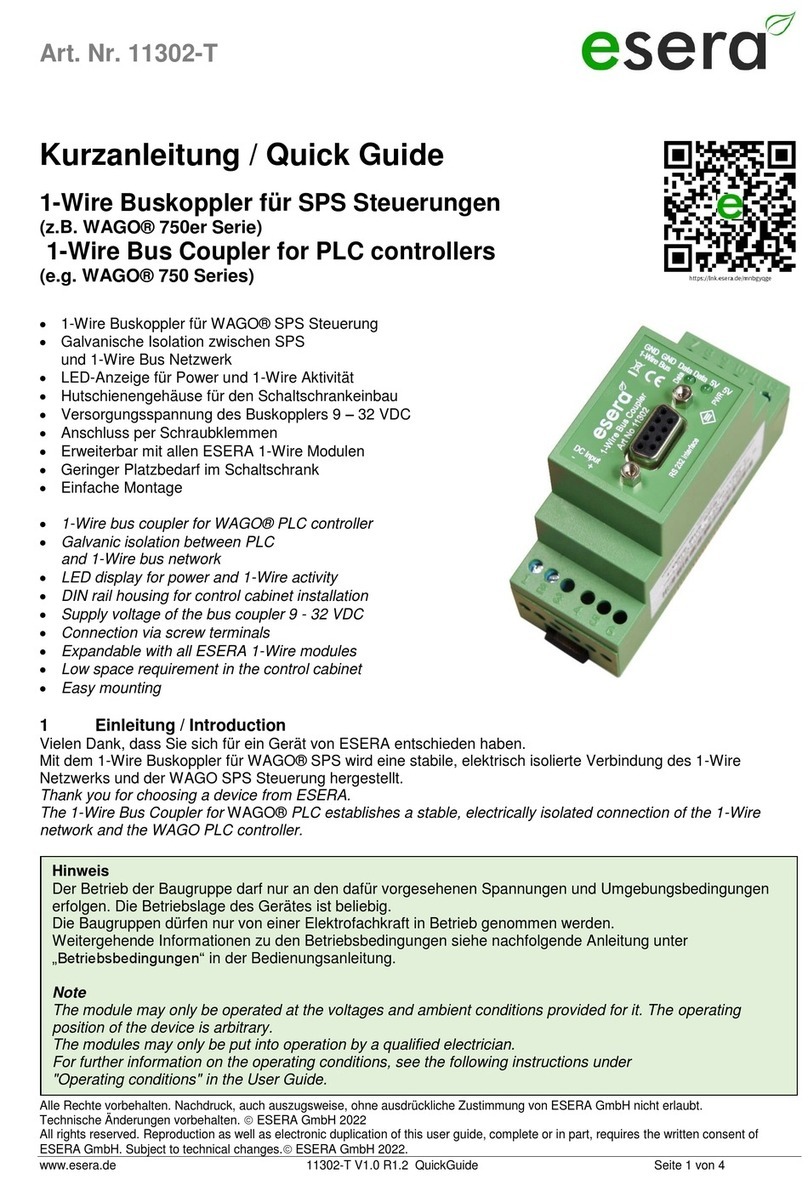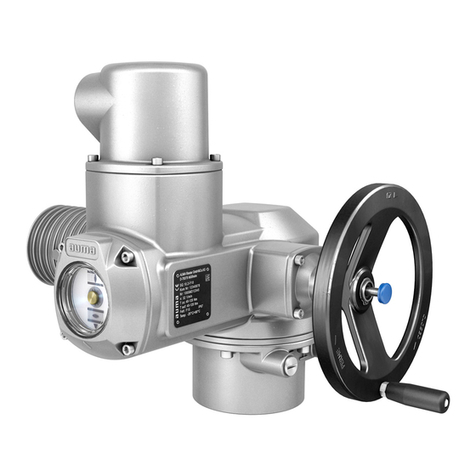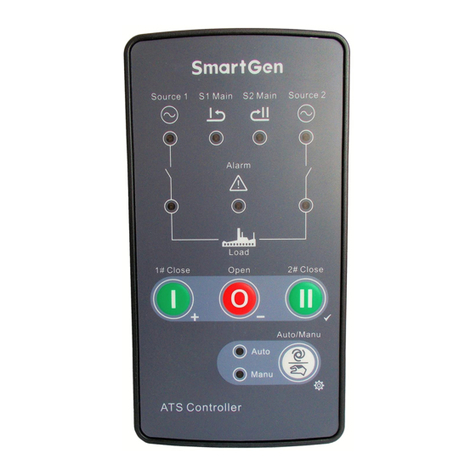Gira 5023 00 User manual

Switching actuator / blind actuator 16 A Standard & Komfort
Switching actuator, 6-gang / blind actuator, 3-gang Standard
Order no.: 5023 00
Switching actuator, 16-gang / blind actuator, 8-gang Standard
Order no.: 5028 00
Switching actuator, 24-gang / blind actuator, 12-gang Standard
Order no.: 5030 00
Switching actuator, 6-gang / blind actuator, 3-gang Komfort
Order no.: 5033 00
Switching actuator, 16-gang / blind actuator, 8-gang Komfort
Order no.: 5038 00
Switching actuator, 24-gang / blind actuator, 12-gang Komfort
Order no.: 5040 00
Operating instructions
1 Safety instructions
Electrical devices may only be mounted and connected by electrically skilled persons.
Serious injuries, fire or property damage possible. Please read and follow manual fully.
The device may not be opened or operated outside the technical specifications.
Danger of electric shock. Device is not suitable for disconnection from supply voltage.
Danger of electric shock on the SELV/PELV installation. Do not connect loads for mains voltage
and SELV/PELV together to the device.
For parallel connection of several motors to an output it is essential to observe the correspond-
ing instructions of the manufacturers, and to use a cut-off relay if necessary. The motors may be
destroyed.
Use only venetian blind motors with mechanical or electronic limit switches. Check the limit
switches for correct adjustment. Observe the specifications of the motor manufacturers. Device
can be damaged.
Do not connect any three-phase motors. Device can be damaged.
These instructions are an integral part of the product, and must remain with the end customer.
2 Device components
Figure1: Device components
(1) Button field for manual operation
(2) Programming button and LED
(3) KNX connection
1 / 9
82402612 23.09.2020

Switching actuator / blind actuator 16 A Standard & Komfort
(4) Status LEDs for outputs
(5) Load connections (relay outputs)
3 Function
System information
This device is a product of the KNX system and complies with the KNX directives. Detailed tech-
nical knowledge obtained in KNX training courses is a prerequisite to proper understanding.
The function of this device depends upon the software. Detailed information on loadable soft-
ware and attainable functionality as well as the software itself can be obtained from the manu-
facturer´s product database.
The device can be updated. Firmware can be easily updated with the Gira ETS Service App
(additional software).
The device is KNX Data Secure capable. KNX Data Secure offers protection against manipula-
tion in building automation and can be configured in the ETS project. Detailed specialist know-
ledge is required. A device certificate, which is attached to the device, is required for safe com-
missioning. During mounting, the certificate must be removed from the device and stored se-
curely.
Planning, installation and commissioning of the device are carried out with the aid of the ETS,
version 5.7.3 and above.
Intended use
– Switching of electrical loads with potential-free contacts
– Switching of electrically-driven Venetian blinds, roller shutters, awnings and similar
hangings
– Mounting on DIN rail according to EN 60715 in small distribution boards
Product characteristics
– Outputs can be operated manually, construction site mode
– Feedback in manual mode and in bus mode
– Disabling of individual outputs manually or by bus
– Status feedback (e. g. wind alarm)
– KNX Data Secure compatible
– Updateable with Gira ETS Service App
Characteristics switch operation
– Operation as NO or NC contacts
– Feedback function
– Logic and restraint function
– Central switching functions with collective feedback
– Time functions: switch-on delay, switch-off delay, staircase lighting timer with run-on time
– Scene function
– Operating hours counter
Characteristics blinds operation
– Suitable for AC motors 110...230 V
– Operating modes "Venetian blind with slats", "Roller shutter/awning", "Venting louver/roof
window"
– Blind/shutter position directly controllable
– Slat position directly controllable
– Feedback of movement status, blind/shutter position and slat position
– Forced position through higher-level controller
– Safety function: 3 independent wind alarms, rain alarm, frost alarm
2 / 9
82402612 23.09.2020

Switching actuator / blind actuator 16 A Standard & Komfort
– Sun protection function with heating/cooling operation
– Disabling function (lock-out protection)
– Scene function
Logic function characteristics
– Logic gates
– Transformer (conversion)
– Disabling element
– Comparator
– Limit value switch
4 Operation
Figure2: Operating elements
(4) Status LEDs for outputs
ON: Relay output closed
OFF: Relay output opened
Flashes slowly: output in manual mode selected
Flashes quickly: Output disabled via continuous manual mode
(6) Button ǃ
Manual operation
(7) LED ǃ
ON: continuous manual mode active / Flashing: temporary manual control active
(8) LED DŽ
ON: relay outputs closed, manual operation active
(9) Button DŽ
Short: switch on, adjust slats or stop.
Long: Move hanging upwards
(10) Button Dž
Short: switch off, adjust slats or stop.
Long: Move hanging downwards.
(11) LED Dž
ON: relay outputs open, manual control active
(12) Button ALL OFF
Open all relay outputs, stop drives
In operation with the button field the device distinguishes between a short and a long press.
– Short: actuation for less than 1 s
– Long: actuation of between 1 and 5 s
In switching operation, the device distinguishes between the operating modes "normally
open contact" and "normally closed contact". The buttons (9 + 10) change the switching
status when pressed:
3 / 9
82402612 23.09.2020

Switching actuator / blind actuator 16 A Standard & Komfort
Normally open contact: switch on = close relay, switch off = open relay
Normally closed contact: switch on = open relay, switch off = close relay
The LEDs (4 + 8 + 11) always indicate the relay status.
The LEDs (4) optionally indicate the status of the outputs only temporarily (depending on
the parameters).
Operating modes
– Bus operation: Operation via push-button sensors or other bus devices
– Temporary manual control: manual control locally with keypad, automatic return to bus
control
– Continuous manual mode: Exclusively manual operation on the device
No bus operation is possible in manual mode.
After a bus failure and restoration the device switches to bus operation.
The manual mode can be disabled in ongoing operation via a bus telegram.
Switching on the temporary manual control
Operation using the button field is programmed and not disabled.
■ Press button ǃ (6) briefly.
LED ǃ (7) flashes, LEDs A1... (4) of the first configured output or output pair flash.
Short-time manual operation is switched on.
After 5 s without a key-press, the actuator returns automatically to bus operation.
Switching off temporary manual operation
The device is in short-term manual mode.
■ No button-press for 5 s.
- or -
■ Press ǃ (6) button briefly as many time as necessary until the actuator leaves the
short-time manual mode.
Status LEDs A1... (4) no longer flash, but rather indicate the relay status.
Short-time manual operation is switched off.
Switching outputs: depending on the programming, the output relays switch to the position
that is active after the manual mode is switched off, e.g. to the forced position, logic func-
tion.
Blind/shutter outputs: depending on the programming, the hangings move to the position
that is active after the manual mode is switched off, e.g. to the forced position, safety or
sun protection position.
Switching on permanent manual control
Operation using the button field is programmed and not disabled.
■ Press the ǃ (6) button for at least 5 s.
LED ǃ (7) lights up, LEDs A1... (4) of the first configured output or output pair flash.
Continuous manual mode is switched on.
Switching off permanent manual control
The device is in continuous manual mode.
■ Press the ǃ (6) button for at least 5 s.
LED ǃ (7) is off.
Continuous manual mode is switched off. Bus operation is switched on.
4 / 9
82402612 23.09.2020

Switching actuator / blind actuator 16 A Standard & Komfort
Switching outputs: depending on the programming, the output relays switch to the position
that is active after the manual mode is switched off, e.g. to the forced position, logic func-
tion.
Blind/shutter outputs: depending on the programming, the hangings move to the position
that is active after the manual mode is switched off, e.g. to the forced position, safety or
sun protection position.
Operating an output in manual mode
■ Activate short-term or permanent manual operation.
■ Press button ǃ (1) repeatedly until LED A1... (4) of the desired output or output pair
flashes.
■ Press button DŽ (9) or Dž (10).
Short: Switch on/off, drive stop
Long: Move blind/shutter upwards/downwards
LED DŽ (3) ON: Relay output closed
LED Dž (6) OFF: Relay output opened
Short-term manual operation: After running through all of the outputs the device exits
manual mode after another brief press.
Switching off all outputs / Stopping all hangings
The device is in continuous manual mode.
■ Press the ALL OFF button (7).
Switching outputs: All outputs switch off (NO operating mode: relay output opened/NC op-
erating mode: relay output closed).
Venetian blind outputs: All blinds/shutters stop.
Disabling outputs
The device is in continuous manual mode. The bus control can be disabled (ETS parameter).
■ Press button ǃ (6) repeatedly until LED A1... (4) of the desired output or output pair
flashes.
■ Press the/ DŽ (9) and / Dž (10) buttons simultaneously for approx. 5 s.
Selected output is disabled.
The status LED A1... (4) of the selected output or output pair flashes quickly.
A disabled output can be operated in manual mode.
Re-enabling outputs
The device is in continuous manual mode. One or more outputs were disabled in manual mode.
■ Press button ǃ (6) repeatedly until the output to be unlocked or the output pair is selec-
ted.
■ Press the/ DŽ (9) and / Dž (10) buttons simultaneously for approx. 5 s.
Disabling is deactivated.
The LED A1... (4) of the selected output or output pair flashes slowly.
5 Information for electrically skilled persons
DANGER!
Mortal danger of electric shock.
Disconnect the device. Cover up live parts.
5 / 9
82402612 23.09.2020

Switching actuator / blind actuator 16 A Standard & Komfort
5.1 Fitting and electrical connection
Fitting the device
In secure operation (preconditions):
– Secure commissioning is activated in the ETS.
– Device certificate entered/scanned or added to the ETS project. A high resolution camera
should be used to scan the QR code.
– Document all passwords and keep them safe.
Observe ambient temperature. Ensure adequate cooling.
■ Mount device on DIN rail.
■ In secure operation: The device certificate must be removed from the device and stored
securely.
Connecting the device
Figure3: Device connection (connection example):
■ Connect bus line with KNX connecting terminal according to their correct polarity.
■ Attach the cover cap to the KNX connection as protection against hazardous voltages.
■ Connect load as shown in the connection example. Two adjacent relay outputs form a
Venetian blind output.
The total current capacity of neighbouring outputs is a maximum of 20 A.
Figure4: Total current capacity of neighbouring outputs
6 / 9
82402612 23.09.2020

Switching actuator / blind actuator 16 A Standard & Komfort
5.2 Commissioning
Commissioning the device
NOTICE!
Incorrect load control due to undefined relay state at delivery.
Risk of destruction of connected drive motors.
During commissioning, before switching on the load, ensure that all relay contacts
are open by applying the KNX bus voltage. Observe commissioning sequence!
■ Switch on the KNX bus voltage.
■ Wait about 10 s.
■ Switch on load circuits.
Delivery state: The outputs can be operated with manual control. Outputs are set as vene-
tion blind outputs.
Load physical address and application program
■ For switched loads, configure the outputs as a switching output.
■ For Venetian blind operation, configure the outputs as a Venetian blind output.
■ In Venetian blind operation: measure blind/shutter and slat travel times and enter them in
the parameter setting.
■ Press the programming button.
The programming LED lights up.
■ Load physical address and application program using the ETS.
Safe-state mode
The safe state mode stops the execution of the loaded application program.
Only the system software of the device is still functional. ETS diagnosis functions and pro-
gramming of the device are possible. Manual operation is not possible.
Activating the safe-state mode
■ Switch off the bus voltage or remove the KNX device connection terminal.
■ Wait about 15 s.
■ Press and hold down the programming button.
■ Switch on the bus voltage or attach the KNX device connection terminal. Release the pro-
gramming button only after the programming LED starts flashing slowly.
The safe-state mode is activated.
With a new brief press of the programming button, the programming mode can be
switched on and off as usual also in the safe-state mode. If Programming mode is active,
the programming LED stops flashing.
Deactivating safe-state mode
■ Switch off bus voltage (wait approx. 15 s) or carry out ETS programming.
Master reset
The master reset restores the basic device setting (physical address 15.15.255, firmware re-
mains in place). The device must then be recommissioned with the ETS. Manual operation is
possible.
During secure operation: A master reset deactivates device security. The device can then be re-
commissioned with the device certificate.
Performing a master reset
Precondition: The safe-state mode is activated.
7 / 9
82402612 23.09.2020

Switching actuator / blind actuator 16 A Standard & Komfort
■ Press and hold down the programming button for > 5 s.
The programming LED flashes quickly.
The device performs a master reset, restarts and is ready for operation again after ap-
prox. 5 s.
Restoring the device to factory settings
Devices can be reset to factory settings with the Gira ETS Service App. This function uses the
firmware contained in the device that was active at the time of delivery (delivery state). Restor-
ing the factory settings causes the devices to lose their physical address and configuration.
6 Technical data
Ambient conditions
Ambient temperature -5 ... +45 °C
Storage/transport temperature -25 ... +70 °C
KNX
KNX medium TP256
Commissioning mode S-mode
Rated voltage KNX DC 21 ... 32 V SELV
Current consumption KNX
Order no. 5023 00, 5028 00,
5033 00, 5038 00
5 ... 18 mA
Order no. 5030 00, 5040 00 5 ... 24 mA
Outputs
Switching voltage AC 250 V ~
Switching current AC1 16 A
Fluorescent lamps 16AX
Current carrying capacity
Neighbouring outputs Ʃ 20 A
Loads per output
Ohmic load 3000 W
Capacitive load max. 16 A (140μ)
Motors 1380 VA
Switch-on current 200 μs max. 800 A
Switch-on current 20 ms max. 165 A
Lamp loads 230 V
Incandescent lamps 3000 W
HV halogen lamps 2500 W
HV-LED lamps max. 400 W
LV halogen lamps with electronic transformers 1500 W
LV halogen lamps with inductive transformer 1200 VA
Fluorescent lamps T5/T8
uncompensated 1000 W
parallel compensated 1160 W (140 μF)
twin-lamp circuit 2300 W / 140 μF
8 / 9
82402612 23.09.2020

Switching actuator / blind actuator 16 A Standard & Komfort
Compact fluorescent lamps
uncompensated 1000 W
parallel compensated 1160 W (140 μF)
Mercury vapour lamps
uncompensated 1000 W
parallel compensated 1160 W (140 μF)
Fitting width
Order no. 5023 00, 5033 00 72 mm / 4 module
Order no. 5028 00, 5038 00 144 mm / 8 module
Order no. 5030 00, 5040 00 216 mm / 12 module
Weight
Order no. 5023 00, 5033 00 approx. 230 g
Order no. 5028 00, 5038 00 approx. 500 g
Order no. 5030 00, 5040 00 approx. 740 g
Clampable conductor cross-section
single stranded 0.5 ... 4 mm²
Finely stranded without conductor sleeve 0.5 ... 4 mm²
Finely stranded with conductor sleeve 0.5 ... 2.5 mm²
Connection torque screw terminals max. 0.8 Nm
7 Warranty
The warranty is provided in accordance with statutory requirements via the specialist trade.
Please submit or send faulty devices postage paid together with an error description to your re-
sponsible salesperson (specialist trade/installation company/electrical specialist trade). They will
forward the devices to the Gira Service Center.
Gira
Giersiepen GmbH & Co. KG
Elektro-Installations-
Systeme
Industriegebiet Mermbach
Dahlienstraße
42477 Radevormwald
Postfach 12 20
42461 Radevormwald
Deutschland
Tel +49(0)21 95 - 602-0
Fax +49(0)21 95 - 602-191
www.gira.de
9 / 9
82402612 23.09.2020
This manual suits for next models
5
Table of contents
Other Gira Controllers manuals
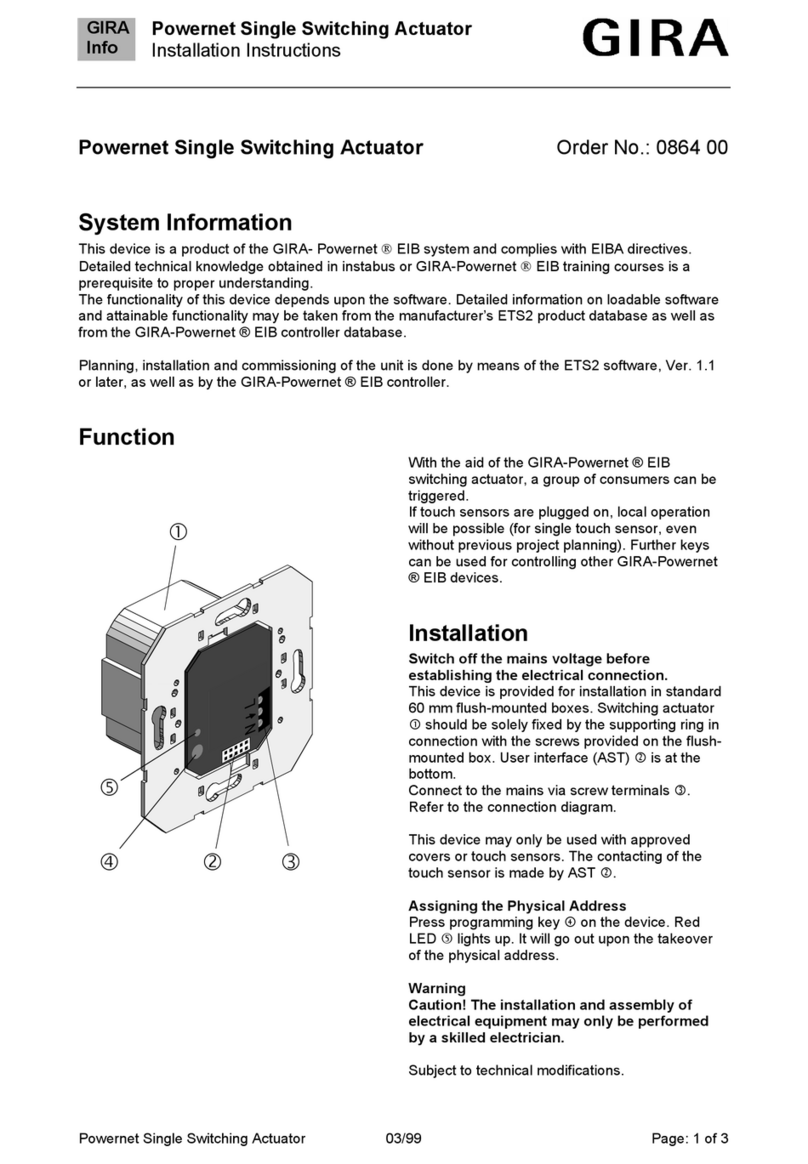
Gira
Gira Powernet Single Switching Actuator User manual
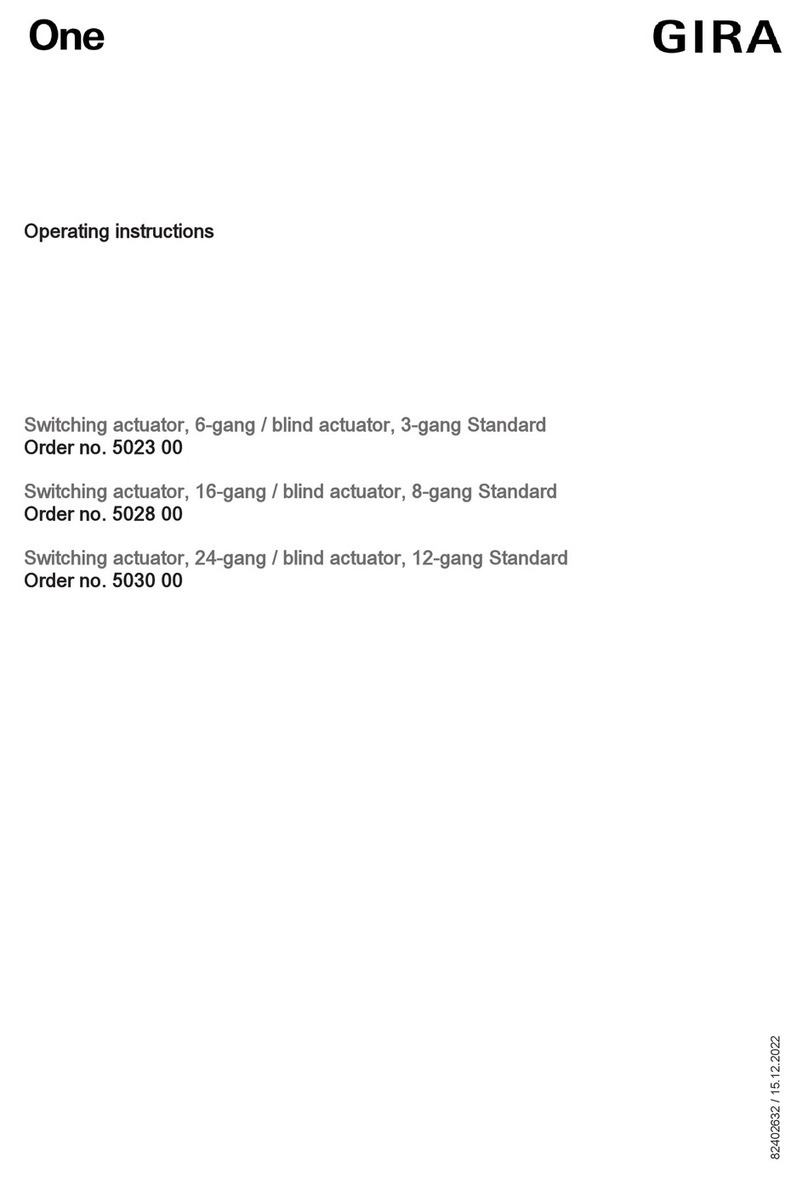
Gira
Gira One 5023 00 User manual
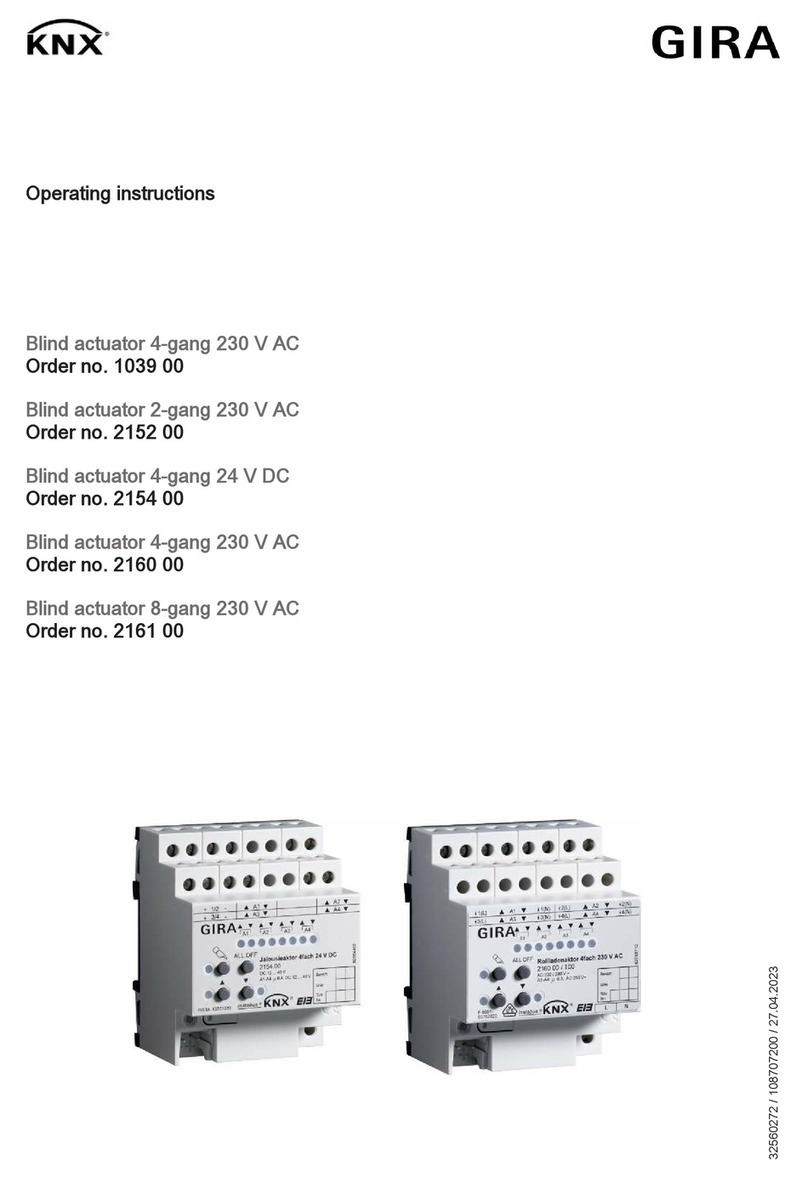
Gira
Gira KNX 1039 00 User manual
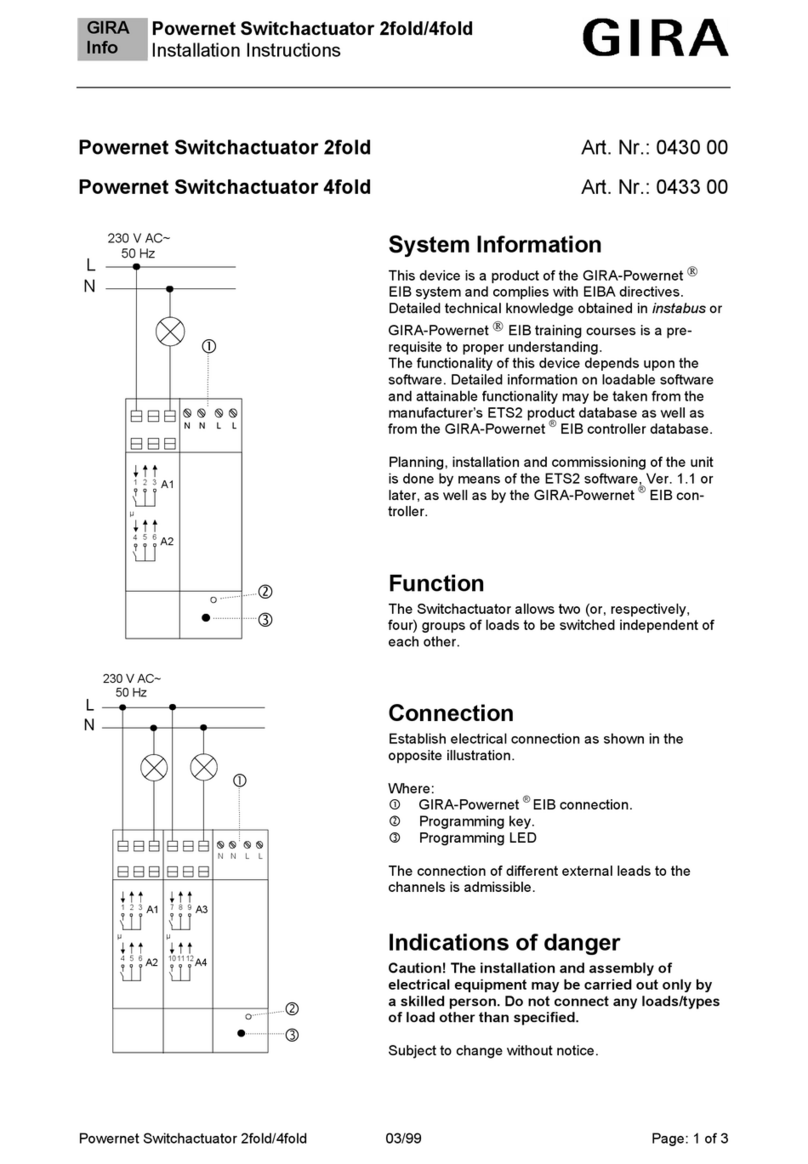
Gira
Gira Powernet Switchactuator 2fold User manual
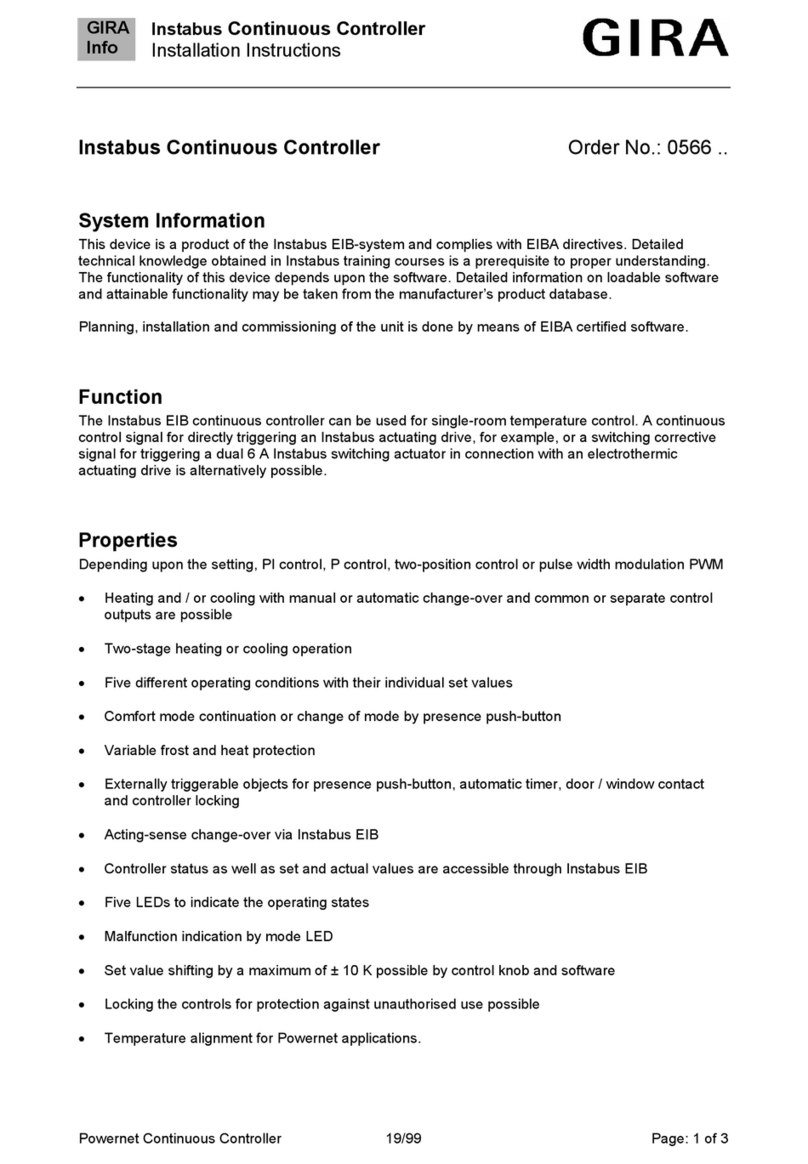
Gira
Gira 0566 Series User manual
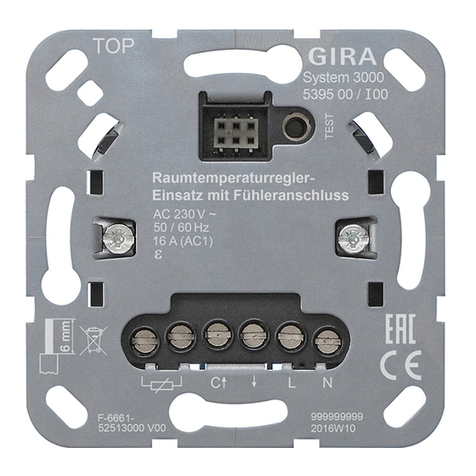
Gira
Gira System 3000 User manual
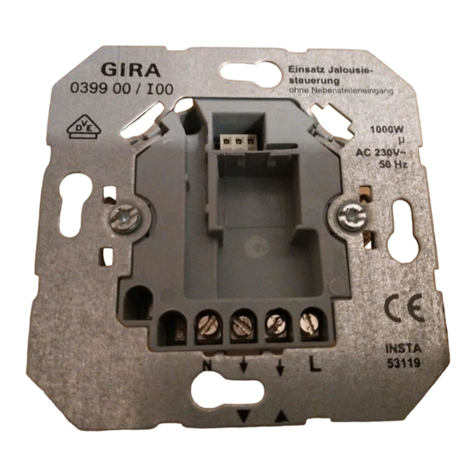
Gira
Gira 0399 00 User manual

Gira
Gira KNX 5062 00 User manual

Gira
Gira 0388 00 User manual
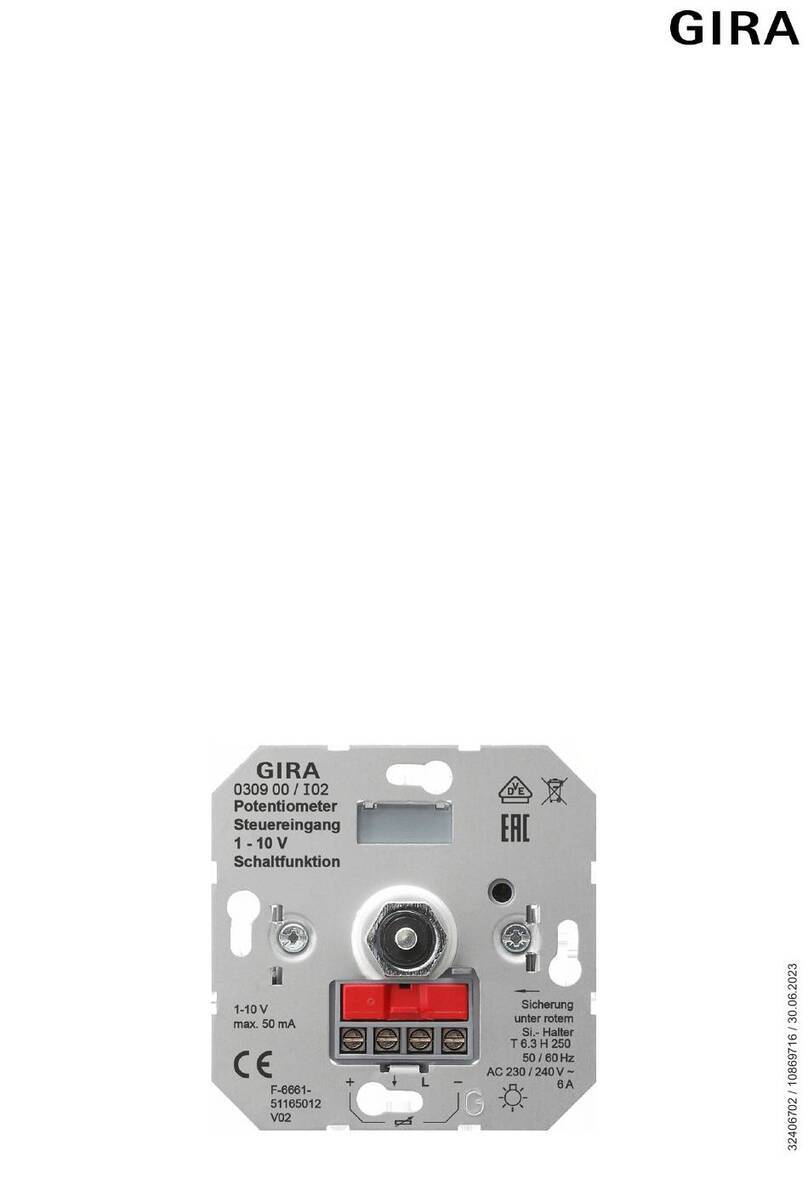
Gira
Gira 0309 00 User manual
Popular Controllers manuals by other brands
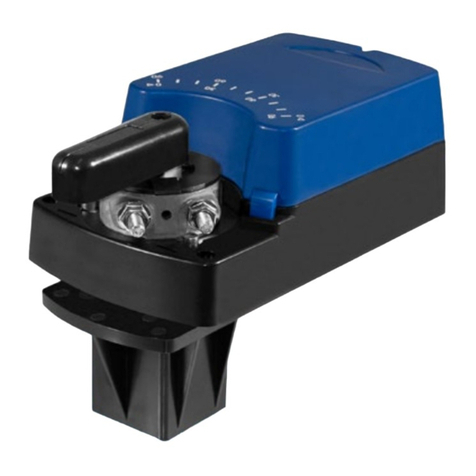
Regin
Regin RVASM16 Instruction
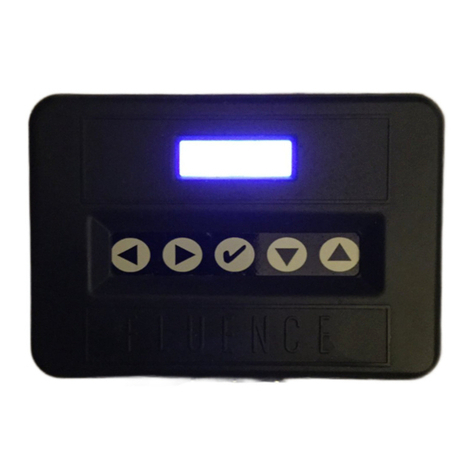
FLUENCE
FLUENCE SOLUNAR user guide
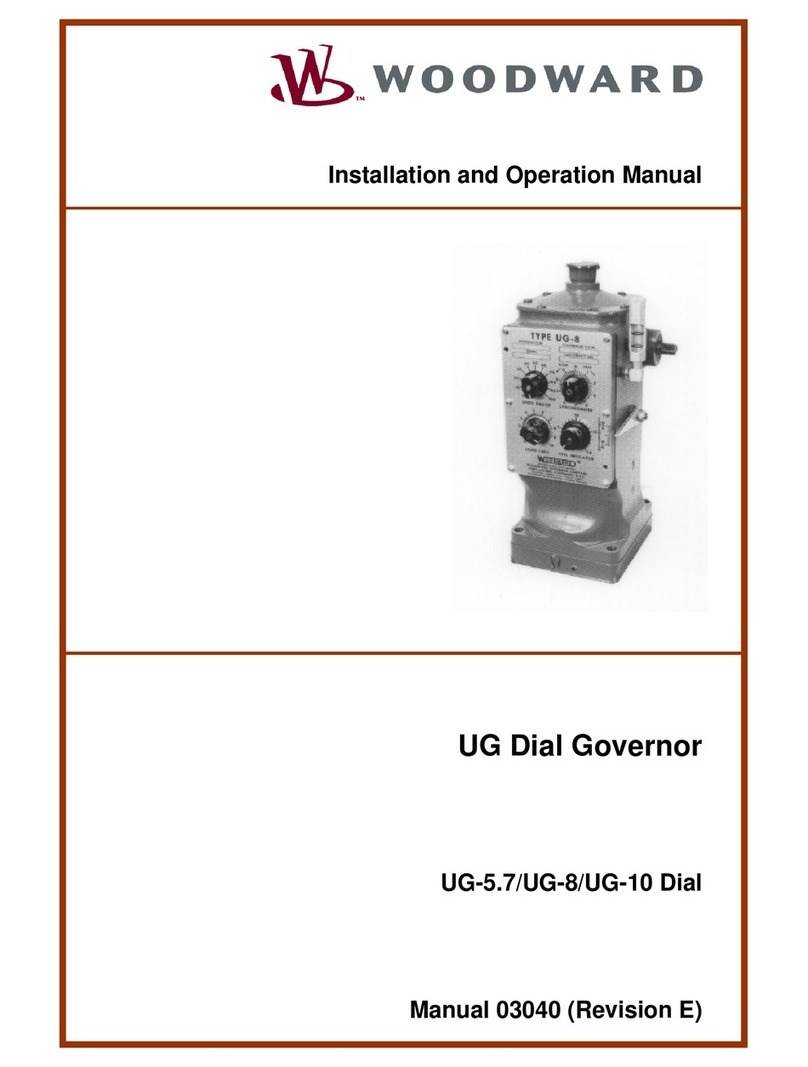
Woodward
Woodward UG-5.7 Dial Installation and operation manual

EngA
EngA ENGINEERED AIR DJM2.4 Installation, operation and maintenance manual
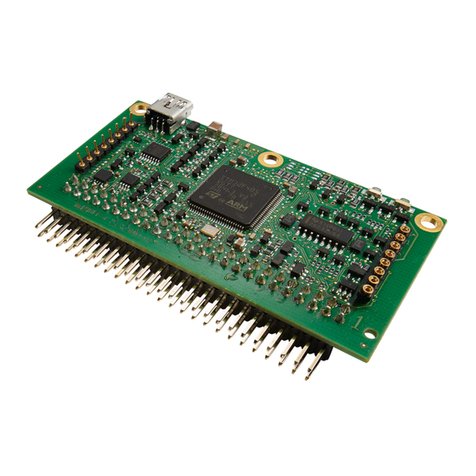
Faulhaber
Faulhaber MC 5010 Communications manual
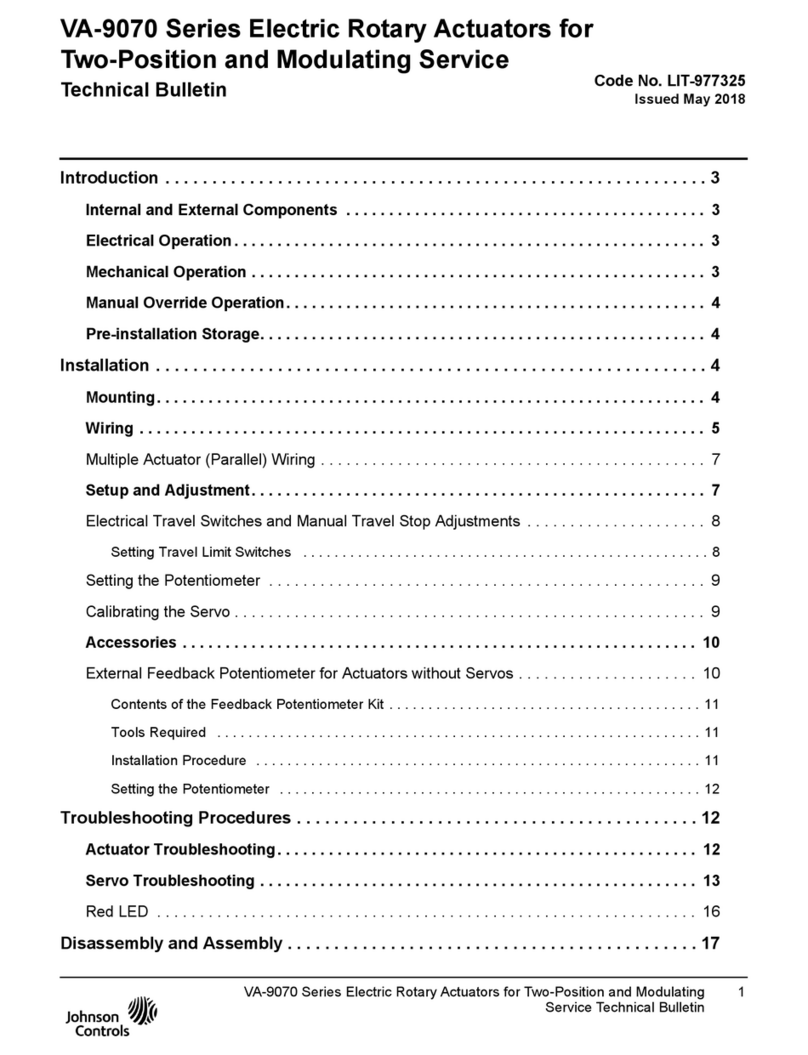
Johnson Controls
Johnson Controls VA-9070 Series Technical bulletin
